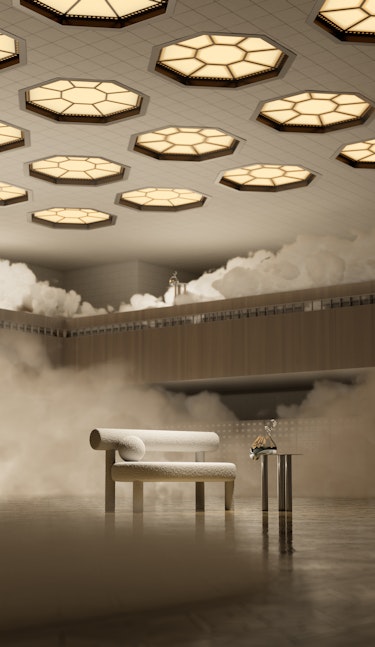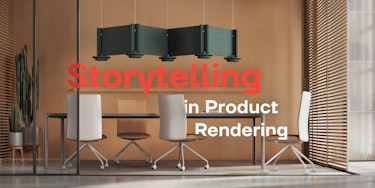Storytelling in product rendering is the art of embedding a narrative within the visual representation of a product. It involves creating a storyline that unfolds through the design, context, and interaction of the product with its environment. Unlike traditional product renderings, which may focus solely on technical accuracy and detail, storytelling-driven renderings aim to evoke emotions, communicate a brand’s values, and engage the audience in a meaningful way.
The evolution of product rendering reflects a broader shift in how we consume and interact with visual content. In the past, product renderings were primarily technical, serving as accurate depictions for designers, engineers, or potential buyers. While technical precision remains crucial, the addition of storytelling transforms these renderings into powerful marketing tools. By incorporating narrative elements, renderings can convey not just what a product looks like, but what it feels like, how it fits into a lifestyle, and why it matters to the consumer.
1.Immersive Opportunities Through Storytelling
One of the most profound impacts of storytelling in product rendering is its ability to create immersive experiences that resonate with audiences on an emotional level. When a product is presented within the context of a story, it becomes more than just an object; it becomes part of a narrative that the audience can relate to. This emotional connection is a powerful tool in driving engagement and, ultimately, consumer decision-making.
For example, consider a rendering of a modern kitchen appliance. A traditional rendering might focus on the sleek design, innovative features, and technical specifications. While informative, it may not fully capture the essence of how this appliance fits into the daily lives of its users. By contrast, a storytelling-driven rendering might depict the appliance in a warm, inviting kitchen setting, surrounded by the sights and sounds of a busy morning. It could show a family enjoying a breakfast prepared with the appliance, highlighting its role in creating moments of togetherness and convenience. This approach not only showcases the product’s features but also connects with the audience on an emotional level, making the appliance feel like a valuable addition to their lives.
The opportunities for creating such immersive experiences are particularly significant in the realms of virtual and augmented reality. In these environments, storytelling takes on an even more critical role, as the entire user experience can be crafted to immerse the audience in a narrative. Whether it’s a virtual tour of a luxury property where the rendering tells the story of modern living or an augmented reality experience where users can interact with a product in their own space, storytelling enhances the depth and engagement of the experience.
2. Communicating Ideas and Interactions
One of the key challenges in product rendering is effectively communicating complex ideas and interactions in a way that is easily understandable and engaging. This is where storytelling becomes invaluable. By framing these concepts within a narrative, we can break down complex features and interactions into digestible, relatable elements that resonate with the audience.
Consider the rendering of a smart home system, where the product involves a multitude of features and interactions. A technical rendering might simply depict the hardware and its placement within a home, but this approach often fails to convey the seamless integration and user-friendly nature of the system. A storytelling-driven rendering, however, might show a day in the life of a homeowner using the system — waking up to automated lighting, controlling the climate from a smartphone, or enhancing security with voice commands. Through this narrative, the rendering communicates not just the technical aspects of the product, but also the convenience, safety, and comfort it brings to the user’s life.
Visual language plays a crucial role in this storytelling process. Colors, shapes, and movements are carefully chosen to evoke specific emotions and guide the viewer’s attention. For instance, cool, calming colors might be used to convey the serenity of a well-designed bedroom, while dynamic shapes and movement could highlight the energy and innovation of a cutting-edge technology product.

3. Enhancing Advertising Through Creative Product Rendering
In the world of advertising, standing out in a crowded marketplace is a constant challenge. Storytelling in product rendering offers a powerful solution by differentiating products through creative narratives that highlight unique features and brand values. This approach not only makes the product more memorable but also reinforces the brand’s identity, creating a stronger connection with the audience.
For instance, a rendering for an eco-friendly product might not only showcase its design and functionality but also tell a story about sustainability and environmental responsibility. The narrative could depict the product being used in a way that reduces waste, conserves resources, or supports a healthier lifestyle. By aligning the rendering with the brand’s values, the product becomes more than just a functional item — it becomes a symbol of the brand’s commitment to making a positive impact.
Engagement and retention are critical metrics in advertising, and storytelling-driven renderings have been shown to enhance both. When audiences are emotionally engaged with a story, they are more likely to remember the product and develop a stronger affinity for the brand. This increased engagement leads to higher retention rates, as the story sticks in the minds of the viewers long after they have seen the rendering.
4. Best Practices for Effective Storytelling in Product Rendering
To achieve the full potential of storytelling in product rendering, it’s essential to follow certain best practices that ensure the narrative is both effective and aligned with the overall marketing strategy. Understanding the target audience is the first and most crucial step. The story must be tailored to resonate with the specific needs, preferences, and emotions of the audience. For example, a rendering targeting tech-savvy millennials might focus on innovation and convenience, while one aimed at luxury buyers might emphasize quality, craftsmanship, and exclusivity.
Consistency in narrative is another critical factor. Every element of the rendering—from the design and setting to the colors and lighting — must work together to tell a cohesive story. Inconsistencies can dilute the message and confuse the audience, undermining the effectiveness of the rendering. Collaboration between designers, marketers, and storytellers is essential to ensure that the rendering not only looks good but also communicates the intended message effectively.

Storytelling in product rendering is more than just a technique; it’s a powerful tool that transforms the way products are presented, creating deeper connections with audiences and enhancing the overall user experience. By focusing on narrative, product renderings become more than just visuals — they become stories that engage, inspire, and drive action. For architects, potential customers, and enthusiasts looking for a way to make their products stand out in a crowded market, partnering with CUUB Studio offers the opportunity to leverage the power of storytelling in product rendering.
